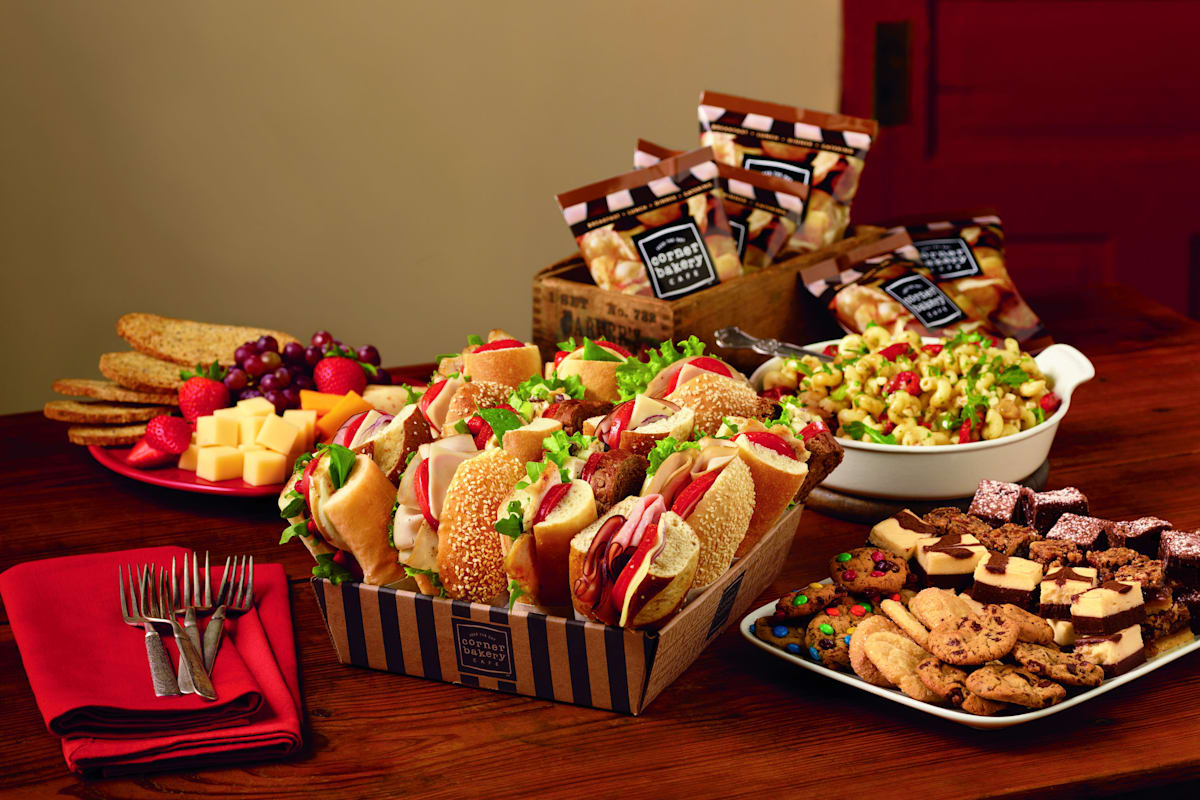Comprehending the Art of Bakery Products: From Freshly Baked Breads to Alluring Pastries and Finger Foods
From the scientific research behind the best loaf of bread, where fermentation and gluten advancement play critical functions, to the finesse required for creating layered breads, each facet reveals an engaging story of workmanship. The flexibility of finger foods highlights how taste and structure can be skillfully combined to involve diverse preference choices.
The Science of Bread Making
At the heart of every loaf of bread lies a remarkable interplay of chemistry and biology. The process of bread making begins with the mix of flour, salt, yeast, and water-- each component playing a crucial duty in the final item.
Yeast, a living microorganism, ferments the sugars existing in the flour, producing carbon dioxide and alcohol in the procedure. The co2 gas creates bubbles in the dough, triggering it to climb and establish a light structure. The temperature and humidity throughout fermentation considerably influence yeast activity and, as a result, the bread's taste and appearance.

Mastering Bread Methods
Just how can one accomplish the fragile balance of structure and flavor that specifies phenomenal bread? Understanding bread methods requires a deep understanding of ingredients, techniques, and the scientific research behind them. Essential to this craft is the option of top notch components-- flour, butter, sugar, and eggs-- each playing a vital role in the final product's taste and structure.
The strategy of lamination, which entails folding layers of dough and butter, develops the wanted flakiness in pastries like croissants and smoke bread. Accuracy in temperature is crucial, as butter needs to stay cold to make sure ideal layers. Proper blending techniques, such as the creaming technique for cakes, ensure also unification of air and fat, resulting in a light and airy crumb.
Furthermore, keeping the appropriate moisture levels throughout baking can substantially influence the end result, making sure that breads rise correctly and accomplish that golden-brown coating. Finally, the art of pastry additionally requires patience and practice; each attempt enhances one's ability and understanding of the detailed equilibrium required to create irresistible pastries that delight the detects. Proficiency in these techniques ultimately identifies a skilled pastry cook from an amateur.
Types of Finger Foods
The world of culinary thrills prolongs past pastries to encompass a vast variety of finger foods, which are commemorated for their benefit and convenience. These bite-sized deals with are excellent for social celebrations, offering a selection of tastes and structures that deal advice with diverse tastes Clicking Here buds.

On the sweeter side, mini tarts and bite-sized cupcakes provide a wonderful coating to any kind of meal, appealing to those with a sweet tooth. Cheese and charcuterie boards offer as a sophisticated choice, allowing visitors to tailor their attacks with an assortment of meats, fruits, cheeses, and nuts.
Flavor Profiles in Baking
Cooking is a detailed dancing of taste accounts that integrates wonderful, tasty, and umami notes to create a harmonious experience for the taste. Recognizing these accounts is necessary for bakers looking for to raise their creations.
Ingredients such as delicious chocolate and caramel present complex pleasant notes that can either dominate or enhance other tastes. Ingredients like cheeses, herbs, and seasonings can transform an easy dough right into a complex flavor experience.
Umami, often neglected in cooking, plays a substantial function in improving tastes. Components such as aged cheeses, fermented items, and even certain hop over to here nuts add to a full-flavored depth that enhances overall taste.
In addition, the interplay of acidity from ingredients like buttermilk or citrus zest can brighten tastes, offering a rejuvenating counterpoint to sweet taste. By thoughtfully combining these taste accounts, bakers can craft products that reverberate with diverse palates, developing an extraordinary cooking experience. Ultimately, mastering flavor accounts is essential to development in the world of cooking.
Vital Cooking Tools and Ingredients
Comprehending flavor accounts in baking sets the stage for selecting the right tools and components that assist in the production of remarkable baked products. The foundation of successful baking lies in having vital tools at hand. Secret products include mixing bowls, measuring cups, and spoons for precision, as well as a durable stand mixer or hand mixer for simple and easy blending. A dependable set of baking frying pans-- such as sheet frying pans, loaf frying pans, and cake pans-- is important for attaining wanted structures and shapes.
Flour serves as the foundation of most dishes; choosing the appropriate type-- be it pastry, bread, or all-purpose flour-- can dramatically affect the outcome. Cooking powder and baking soda are crucial for creating lift in pastries and cakes.
Additionally, integrating flavor enhancers like vanilla essence, spices, and citrus enthusiasm can raise your creations. By ensuring access to these fundamental devices and active ingredients, bakers can confidently start their cooking journey, crafting a diverse variety of fascinating baked items.
Conclusion
To conclude, the art of bakeshop products incorporates an extensive understanding of both clinical concepts and innovative techniques. Mastery in bread production, bread preparation, and finger food presentation reveals the intricate relationships in between components and procedures. Moreover, discovering varied taste accounts enriches the baking experience, while essential devices and ingredients provide the foundation for success. Inevitably, the enchanting globe of cooking thrives on the unified interplay of scientific research and creative thinking, causing a myriad of delightful culinary creations.
Exactly how can one achieve the delicate equilibrium of appearance and taste that specifies remarkable bread? Essential to this craft is the choice of top notch active ingredients-- flour, butter, sugar, and eggs-- each playing a crucial function in the final item's flavor and texture.

Understanding flavor accounts in baking sets the phase for picking the right devices and ingredients that assist in the production of extraordinary baked goods. Exploring diverse taste accounts improves the baking experience, while vital devices and components provide the structure for success.